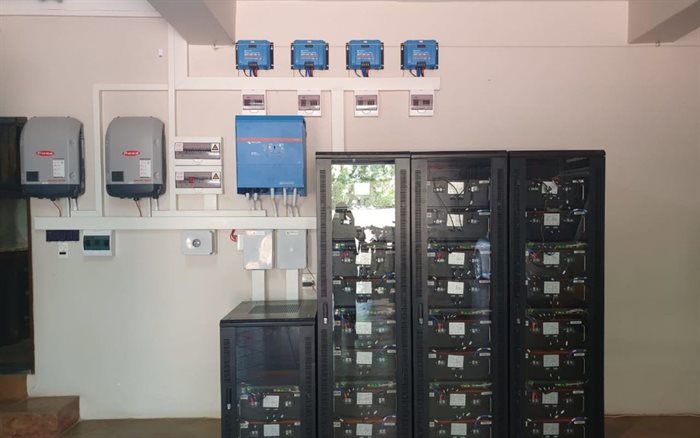
Subscribe & Follow
It's time for our planet to get a second life

If one considers the projects ready to be built that were submitted through Bid Window 5 of the Renewable Energy Independent Power Producer Procurement Programme and appreciates the number of renewable energy projects either completed, underway or planned in the private sector, which will eventually be able to sell into the grid, it is clear that the future is green.
Our sudden acceleration toward sustainable power generation is no doubt driven by our government’s belated reality check that Eskom can’t keep the lights on. Changing the status quo is simply not negotiable. However, let’s not miss an important point here. Yes, we absolutely need to keep the lights on and stop constraining the economy by rationing power, but the global move towards renewable energy is driven by the reality that the world has accepted that we have caused immense damage to our only planet and urgent interventions are needed to try to stem the tide. We all know this, and it's the fire behind strict and ambitious climate change targets for countries around the world.
Thinking with an environmental lens
“Going green” is about more than saying the right thing to get into the right boardrooms to make interesting investments. We all have an obligation to think with an environmental lens if we wish to leave a planet behind for our grandchildren and their grandchildren. Sadly, it appears a substantial proportion of the “going green” narrative is just hot air.
To understand this, one must go back to the beginning to understand what renewable energy is. Solar panels harvest rays from the sun and this is converted into electricity. Similarly, turbines harvest energy from the wind and convert it into electricity. That’s a layman’s understanding but sadly where most of the understanding seems to stop.
You see, to secure available power no matter the weather conditions or time of day, there needs to be battery storage. This means that if there is no wind or sun, the power is stored in large battery systems to supply the demand, and as the sun and wind become favourable again (such as day time for solar and wind for turbines), the batteries are recharged.
Choice of batteries is vital
Once we understand this, we understand that batteries are a fundamental cog in the renewable energy machine. Yet, it doesn’t end there. If we are to take the imperative of environmental consciousness seriously, the choice of batteries is vital. This is where commitment to going green is tested.
The best batteries for energy storage are lithium iron phosphate batteries. They have replaced lead acid and are superior in every metric from performance to safety. However, first-life lithium iron phosphate batteries come with two major concerns. The first, is that the energy storage industry is competing with the booming electric vehicle (EV) industry, and the simple mathematics of supply and demand is going to continue pushing prices upwards. Just recently, The Economist suggested that we may soon see the EV sector struggling to procure batteries out of an inability to supply enough to meet the booming EV demand. Just imagine what this is going to do to the stationary energy storage market.
The second is that a battery filled with lithium that is mined and then transported around the world, is turned into usable batteries and then shipped and carted around the world again. Let’s call a spade a spade: It comes with a carbon cost that is at odds with the commitment to reduce our harm to the environment.
On the other hand, EVs have to replace their batteries every few years when the weight no longer justifies the output. There is currently no suitable recycling option for these batteries, meaning that in the absence of a company such as Revov, they would end up in landfills - again, this is against the spirit of turning the tide on our harm to the environment. Which self-respecting “going green” advocate would be okay with this?

Second-life batteries for storage applications
The batteries removed from EVs are made up of many individual cells. When these good cells are repurposed from a mobility to storage capacity, it results in second-life batteries. These are not secondhand batteries, they are second-life. Battery cells that are designed for mobility are built to withstand harsh operating conditions, making these cells - when repurposed into second-life batteries - far more suitable for harsh conditions when used in storage applications.
Second-life batteries, which have as much life in them as new storage lithium batteries, have three things counting in their favour: they are more cost-effective, they last as long and outperform first-life storage batteries in many respects due to their design, and almost all of their carbon footprint has been accounted for in the EV market, while their use simultaneously closes an important gap in the circular economy by finding a solution to the problem of replaced EV batteries.
Anyone purporting to be “going green” but using anything other than second-life batteries are misleading themselves and doing more harm than good. That’s at odds with what the world wants to achieve with turning the tide on our environmental damage.
If South Africa and the rest of this continent is to put meaning behind the rhetoric that the planet matters, second-life lithium iron phosphate batteries absolutely have to be part of the expected rapid investment in renewable energy. It’s time to give our planet a second life.
Related
Microgrids dominate battery trends in 2025 7 Jan 2025 The fundamental flaw in SA’s renewable power investment Lance Dickerson 24 Apr 2024 SA’s crucial shift to high-voltage battery energy storage systems Lance Dickerson 21 Feb 2024







